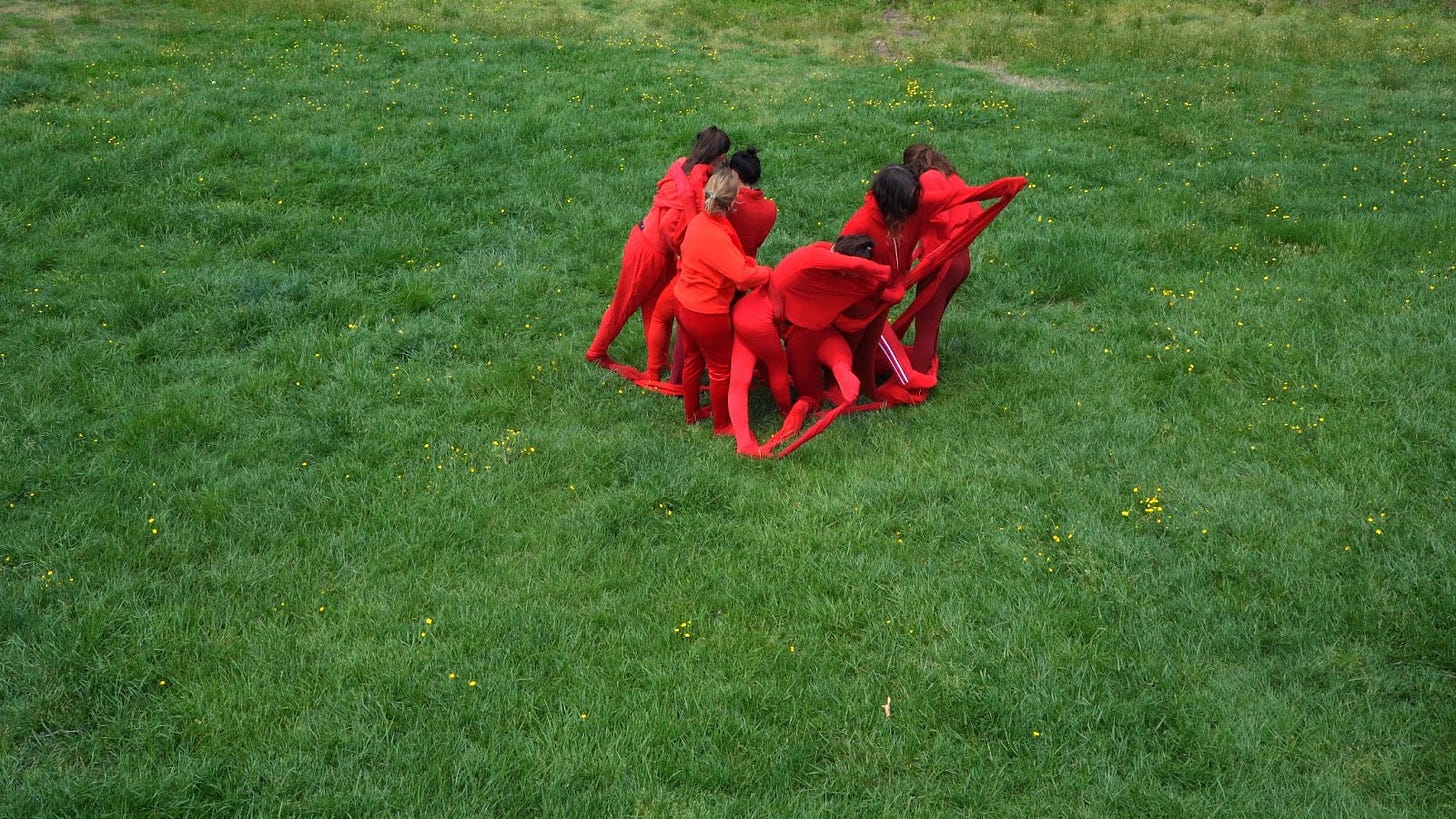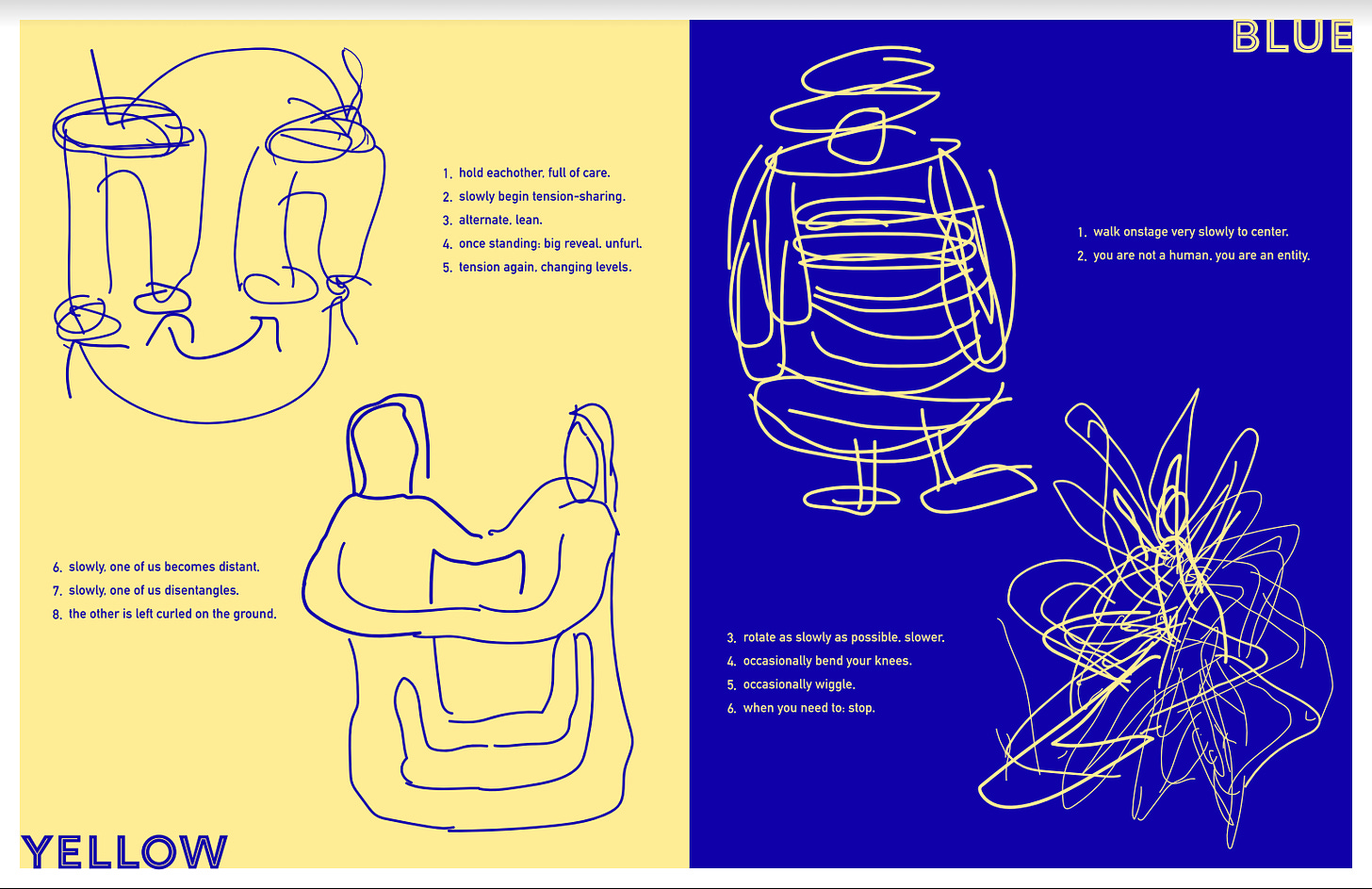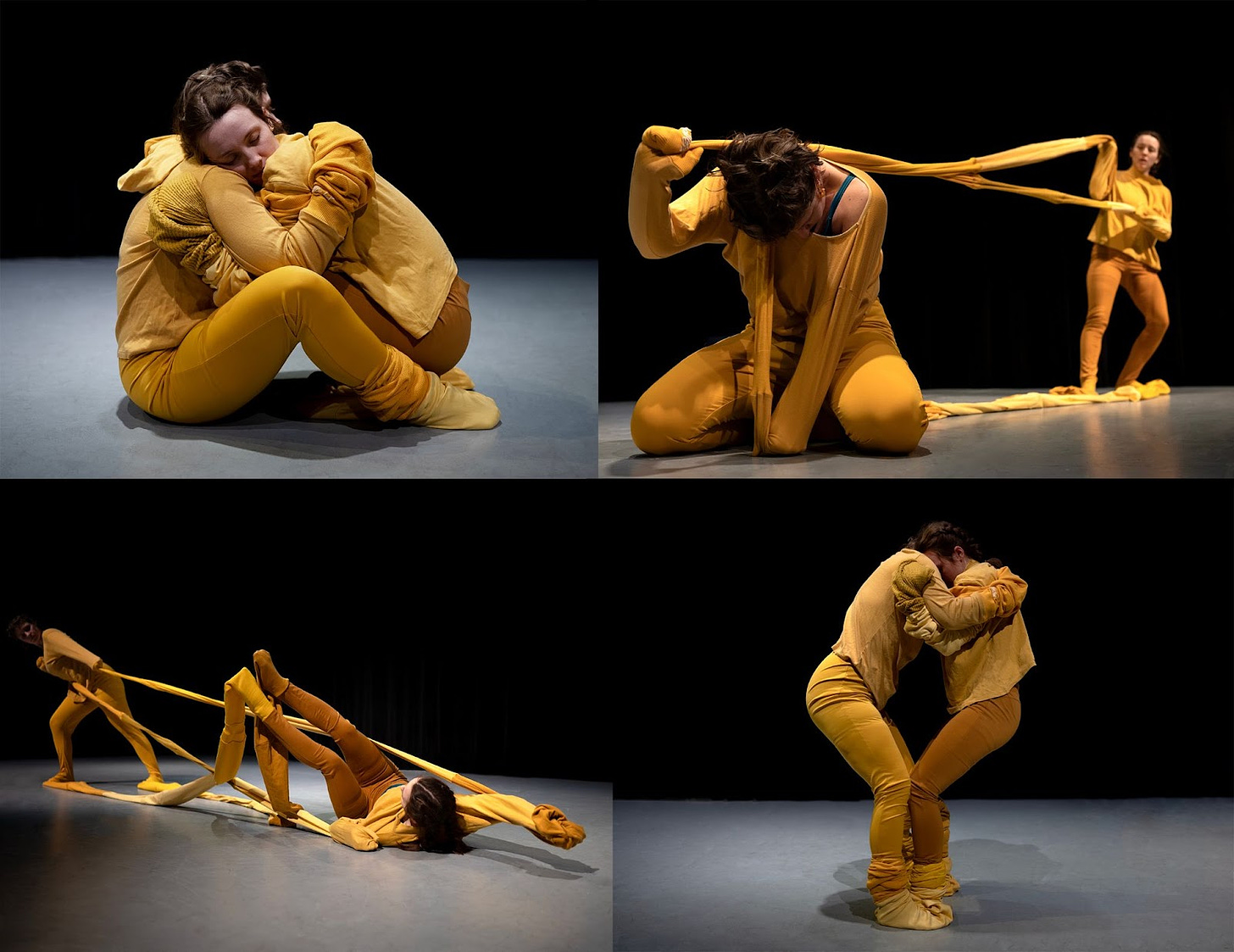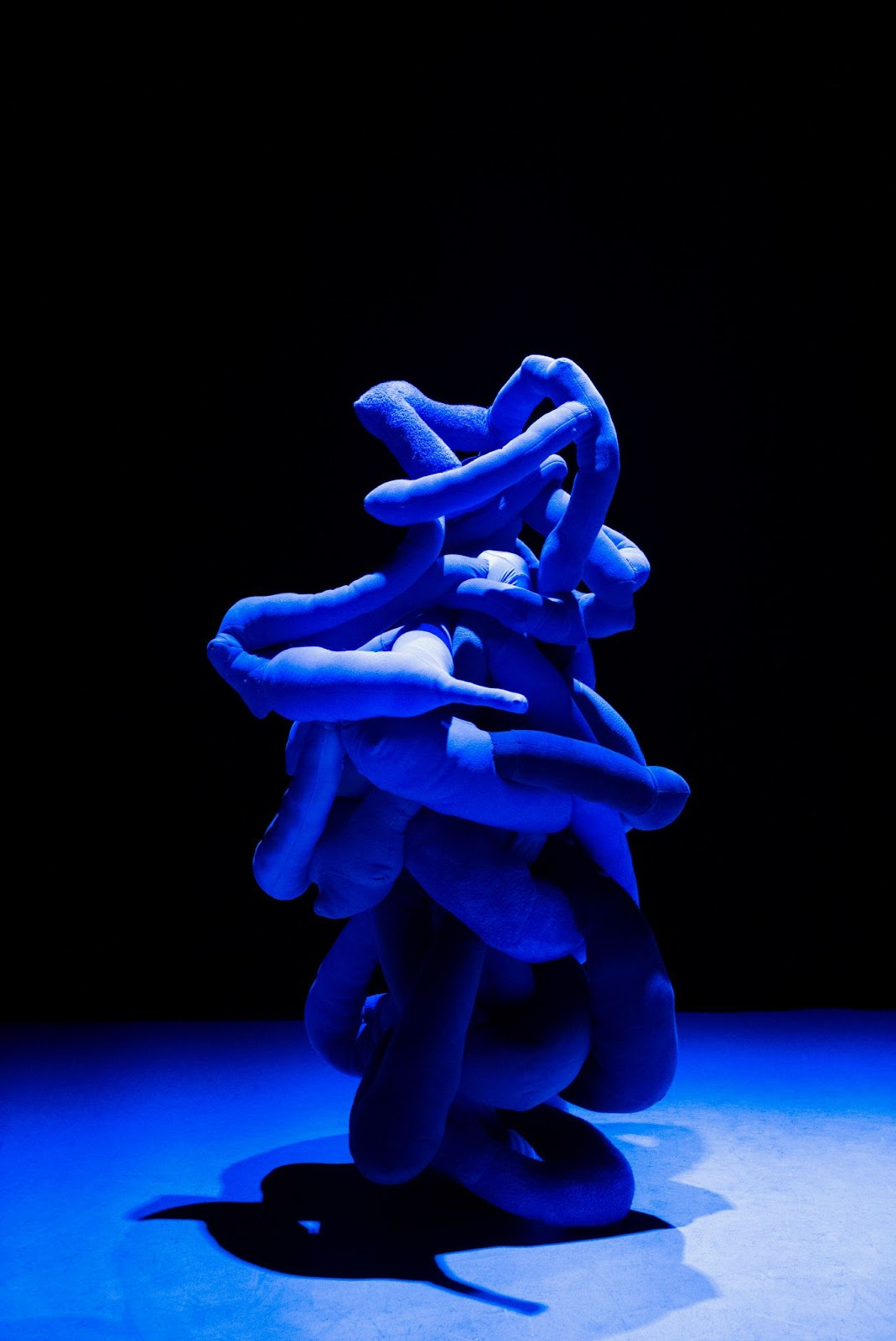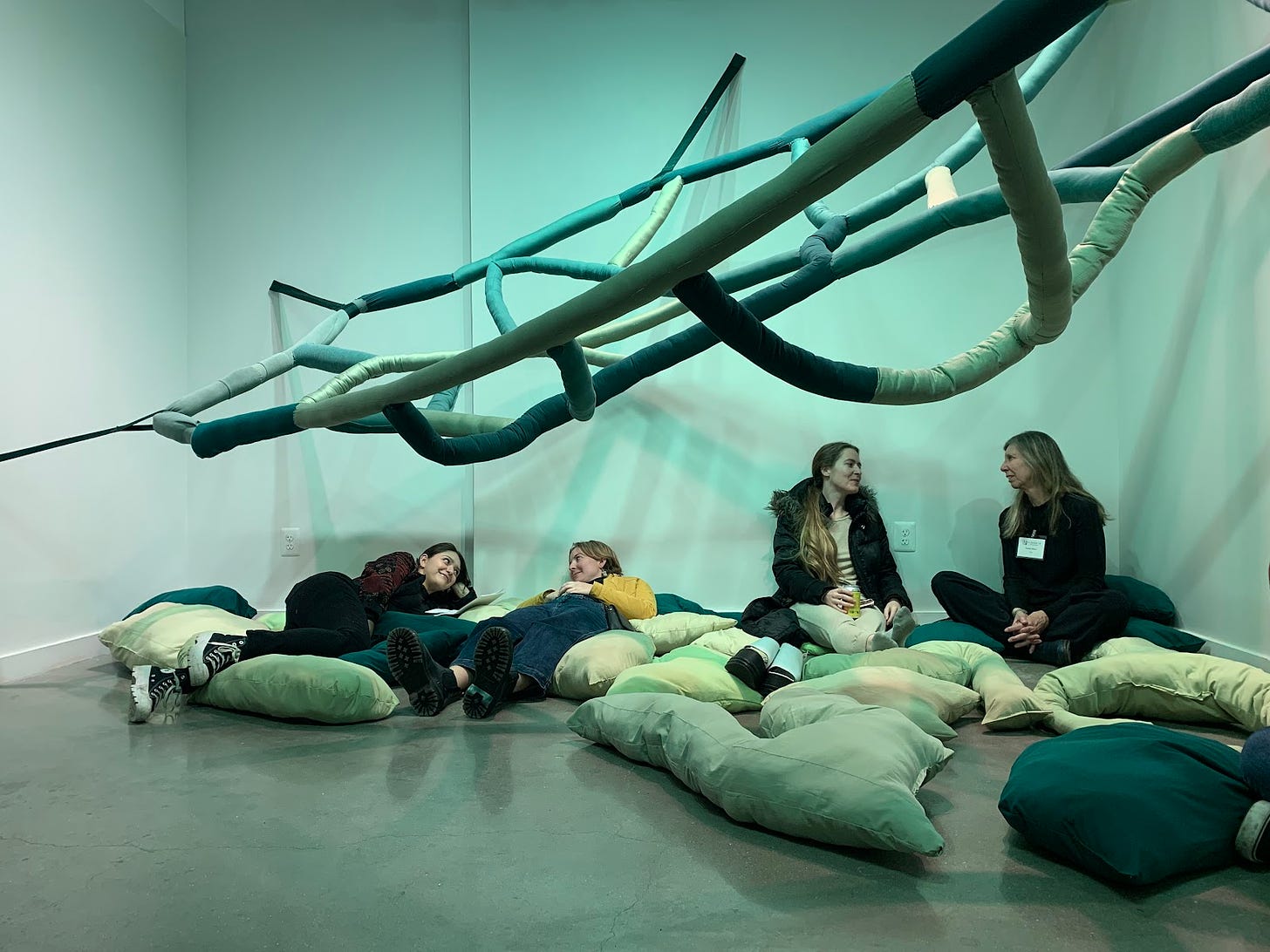Not (Not) Lonely: What is Soft Sculpture?
An interview with Charlotte Richardson-Deppe on performance art, sculpture, and the "ask for help" muscle.
Hey friends,
Have you ever heard of soft sculpture?
Me neither. That is until I met Charlotte Richardson-Deppe at a Little Women-themed birthday party in Brooklyn.
Charlotte is kind, thoughtful, and happens to be Meg’s cousin (remember Meg, from the beautiful comics?) She grew up in St. Paul Minnesota and studied Studio Art at the University of Maryland, College Park, where she’s now a lecturer in the Department of Art.
At the party where we met a few months ago, Charlotte and I were so busy talking about important things like brownies and costumes that I didn’t get to learn much about her art, so I really enjoyed getting to know her more in this interview.
Without further ado…
Hi Charlotte! Let’s dive right in. Can you share a bit about how you got started as an artist?
I grew up in a very arts-oriented family—we sang together, did lots of art projects, and my sister and I would put on lots of shows. In college, I took an art history class but quickly realized I was more interested in drawing the art rather than memorizing facts about it. I began taking art classes and very quickly knew this would be core to my life.
I love the idea of thinking about art as a core of your life. How did you land on sculpture as a medium? What is soft sculpture?
Sculpture, which to me includes and overlaps with installation and performance, is fundamentally about creating experiences in space and time— asserting a new kind of reality and offering it to the viewer. It is a language beyond words that invites people to feel.
I use brightly colored reclaimed clothing to create tubular soft sculptures. I exaggerate bodies and replicate limbs, making visible the invisible ways that humans relate to one another. Using clothes and soft materials to create bodily forms feels extremely natural given that my work primarily concerns human relationships and bodies.
This is such a fascinating way to use clothing and to think about sculpture in general (which I usually think of as hard, solid stone objects…) I’m curious to learn more. How do you approach a project? What’s your process like?
I get flashes of visual ideas, often at random times of day that get scribbled into my notes app or sketchbook. I track these impulses and try to follow them without thinking too hard. Later, I often realize various conceptual resonances that they have with other reading, making, or thinking I have done recently.
Other times, I’m thinking about ideas—what does it mean to need others but also chafe in relationship to others? And my projects unspool as a thought experiment—what if I make a binding relationship between people physical and external, by making an interconnected suit that 9 people wear at the same time?
I’ve honestly never seen anything like this. I love the image above and the contrast of colors, and the tangle of bodies. How do you come up with ideas for these performances and sculptures? Or, to be more concise, what inspires you?
People inspire me—relationships, collaborations, and interactions. I figure things out by talking through them with others. I love only being a phone call away from the most brilliant people in the world—my sister, cousins, art friends near and far.
This morning, I was trying to figure out a name for an upcoming exhibition, and I was tossing potential titles back and forth with my sister and several close friends. My sister sent me this incredibly relevant and always prescient excerpt from Mark Doty’s Still Life with Oysters and Lemon:
“Intimacy, says the phenomenologist Gaston Bachelard, is the highest value…
A fierce internal debate, between staying moored and drifting away, between holding on and letting go. Perhaps wisdom lies in our ability to negotiate between these two poles. Necessary to us, both of them—but how to live in connection without feeling suffocated, compromised, erased? We long to connect; we fear that if we do, our freedom and individuality will disappear.”
This constant tension between our human need for connection and our human desire for freedom is what I return to again and again in my work. I will never resolve this question in my personal life or my art; but I will keep living (trying, connecting, reaching) and making art nonetheless.
There does seem to be — for everyone, not just artists — a back-and-forth between wanting intimacy and wanting to be alone. But I think this can be especially true for artists. What’s a project you’ve worked on that resonates with themes of creating, connecting, and loneliness?
The print below came from an exhibition titled “SCORE!” put on by DC art collective “but, also.” The exhibition had a fun prompt focused on performance artists’ “scores” for their work. (A score is how performance artists notate, plan, or “sketch” their work.)
For this run of risograph prints that accompanied the exhibition/performance, I combined my original notes app sketches for the wearables Yellow and Blue with a written movement score.
Yellow began with a simple concept: a suit for two people, where they are attached at each limb. It’s silly, but silly things are often also profound. How are we beholden to others? Do we want to be? What happens when I don’t want to be beholden to you anymore?
Over the arc of the piece, my collaborator MK and I worked to cultivate care and tenderness, but also tension, chafing, and ultimately loneliness—the work ends with MK taking off the suit and leaving me on stage tangled up in it.
Yellow is followed by Blue. A person wearing a bulky wearable, wreathed in ghostly limbs, enters the stage and slowly rotates while bathed in blue light. The person inside the suit is utterly safe but completely alone: insulated but isolated. I wanted this to contrast the connection of Yellow—both connection and loneliness have benefits and hardships.
Wow, these are so interesting to see in contrast. Related to the themes you’re talking about with Yellow and Blue…do you think being an artist is lonely?
Art can be very lonely. Some artists want nothing more than to be alone in their studios for hours on end. I can get into that vibe for a little while, but alone in my head I tend towards moody despondency. Vibrant social interaction and collaboration is what feeds both my life and practice.
I’m not sure what came first for me: making art that is impossible to install, or perform, or carry, without community; or realizing that I needed consistent community interaction in order to make good art. Either way, I’m completely enmeshed in that cycle now.
I sometimes lament that I have to ask for help—to carry my huge installation up to the attic; to film a video shoot; to hold a ladder while I adjust the lights. Wouldn’t it be easier, simpler, more convenient to be self-contained, self-sufficient, an enclosed system?
But actually: asking for help is profound, vulnerable, necessary, and we all should be doing it more often. It is also reciprocal—I will help you hang your exhibition, and you will help me film my performance. I will carry your sculpture and you will proofread my application.
The only exercise I think everybody should be doing more is strengthening your “asking-for-help” muscle.
My recent exhibition Unfurling considers these questions. In my exhibition statement, I write: “The act of unfurling is a process of opening yourself up to what the world has to offer and what you can offer to the world. What do you need in order to be able to give and receive care from others? What allows you to unfurl?”
At my exhibition opening reception, it was so delightful to watch friends and strangers lounge in the interactive space I created full of pillows and green light. My priority is always to physically practice and enact community, not just to think about it abstractly.
This is the last letter of the Not (Not) Lonely mini-series.
It’s been so fun to connect with friends to learn more about their approach to making art, navigating solitude, finding community, and more.
Thank you for reading and I hope you stick around for the next series!







